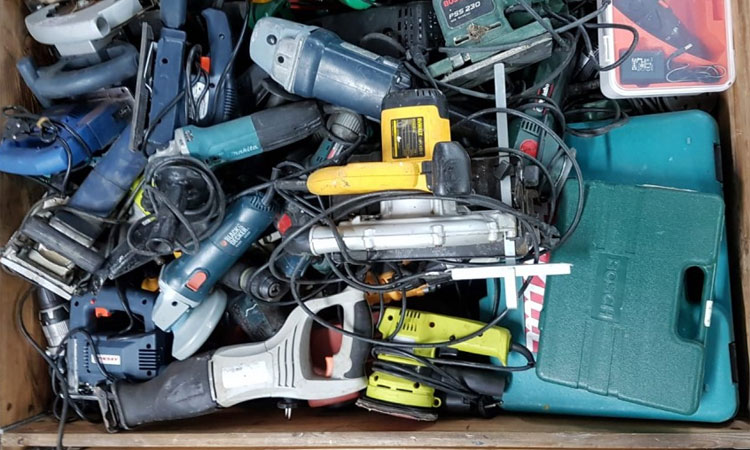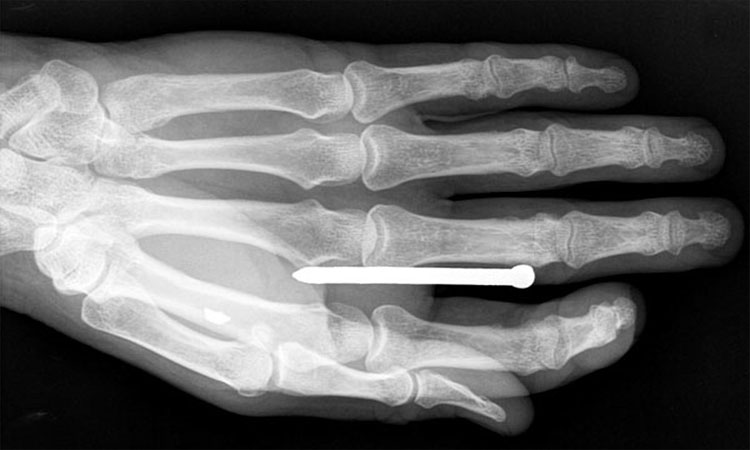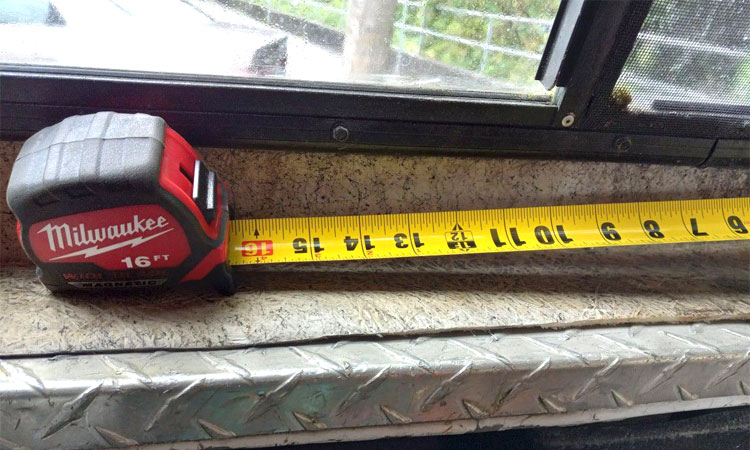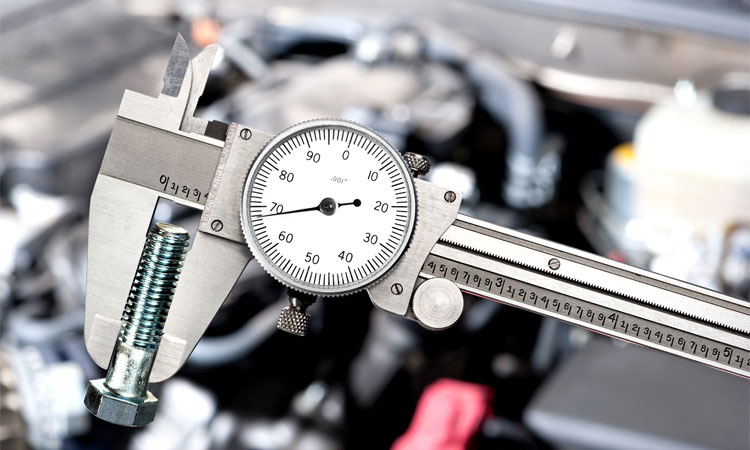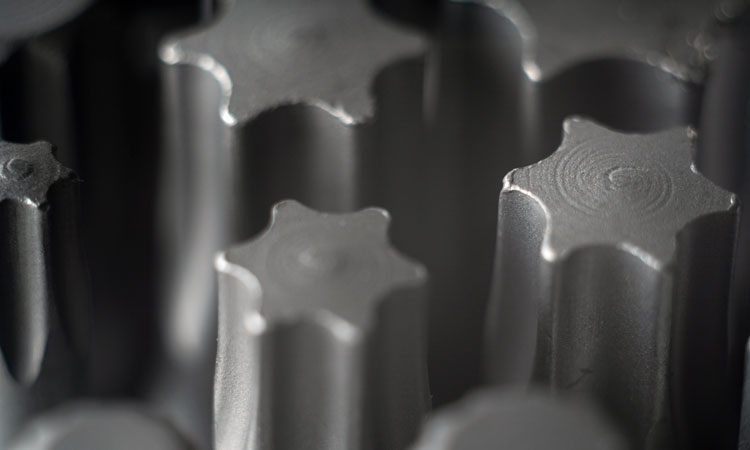40 Different Types of Hammers and Their Uses
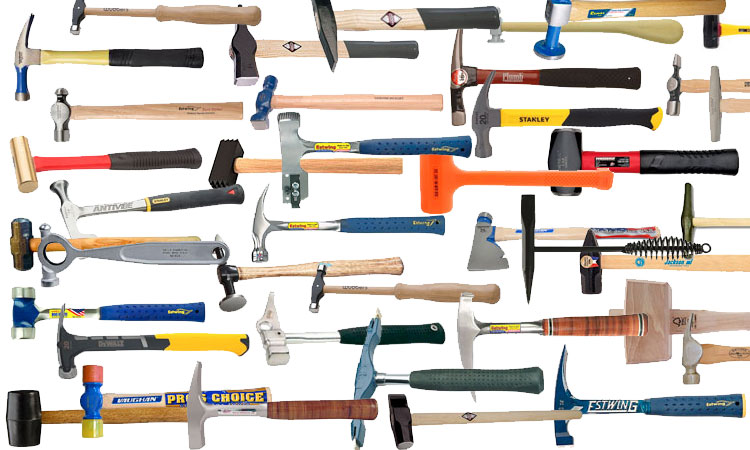
One of the oldest tools, the hammer has evolved to fill a wide variety of roles beyond simple construction. Some types of hammers are highly specialized, and may perform tasks traditionally held by axes. Other types are versatile and have a home in any workshop.
The parts of a hammer can be broken down into three main components. The head is not only the part you whack things with, but also includes the portion that fits over the handle and serves as the fulcrum on a claw hammer when pulling nails.
Least varied in design is the handle, that can be held to provide either more swing or more precision. Finally, the back part may consist of a claw, hook, or pein (also spelled peen).
Listed below are 40 different types of hammers, their uses, and pictures of each.
Read Also: 30 Nail Types and Their Uses
Common Hammers
Chances are, you’ve heard of these hammers, and may even own a few. They are an excellent addition to any home workshop, and owning a full set of these will allow you to complete almost any task.
 Ball Peen Hammer
Ball Peen Hammer
Used primarily by engineers, the pein of this hammer is rounded. It’s commonly used for rounding the edges of metal pins and fasteners, closing rivets, and shaping metal. In past, it was a key tool used for a fabrication method called “peening”.
As a result, it is commonly referred to as a machinist’s hammer. Check out the ball peen hammers we recommend.
 Claw Hammer
Claw Hammer
Perhaps the most recognizable of all hammers, the back of a claw hammer features a curved, forked claw that can grip nail heads, allowing the user to lever out nails. This hammer is so versatile that it can be found in any home or workshop. See our favorite claw hammers.
 Club Hammer
Club Hammer
Often referred to as a drilling hammer or lump hammer, this tool has a short, double-faced head similar to that of a sledge hammer. While not well-suited for commercial work, the club hammer is useful for driving steel chisels and masonry heads, as well as light demolition work.
 Dead Blow Hammer
Dead Blow Hammer
The head of this hammer is specially designed for minimal recoil and soft blows. It usually has either a solid rubber or plastic head, or a semi-hollow head filled with sand or lead shot.
They can be used in everything from woodworking to automotive applications where they aid in dislodging parts, fixing small dents, and knocking wood together or apart without marring the surface.
 Framing Hammer
Framing Hammer
Closely resembling a claw hammer, the framing hammer has a straight claw and waffled head. It is named after its primary function, which is assembling house frames.
The waffled head helps prevent slippage while driving nails, although it mars the surrounding wood, which isn’t seen once a house is finished. Check out our framing hammer top picks.
 Rubber Mallet
Rubber Mallet
The most common type of mallet, its rubber head allows for softer blows. It can be used on sheet metal, in woodworking and upholstery, and is gentle enough to force plasterboard into place without damaging it.
 Sledge Hammer
Sledge Hammer
This long-handled hammer has a metal double-head similar to a mallet, but designed for heavy, large blows. It can be used for driving stakes, or breaking up concrete and masonry, making it a popular demolition tool.
 Tack Hammer
Tack Hammer
This unusual hammer features two long, claw-like heads, one of which is magnetised. It is often referred to as an upholstery hammer, and is designed to hold a tack for placement using the magnetic end, then driving the placed tack using the non-magnetised end.
See Also: 27 Different Types of Ladders
Specialty Hammers
You will likely never see some of these hammers. Many are used for very specific tasks and not commonly found in general-purpose hardware stores. A few of these hammers closely resemble more common hammers, except for weight and slight size or shape differences.
 Blacksmith Hammer
Blacksmith Hammer
Unlike what is depicted in popular fantasy games, the blacksmith’s hammer is a type of sledge hammer where the second head is slightly tapered and rounded. It is designed specifically for shaping red-hot steel against an anvil.
 Blocking Hammer
Blocking Hammer
Featuring a flat, square head on one side and cylindrical head on the other, this is another hammer commonly used by blacksmiths. It can be used for shaping metal on a block or anvil.
 Brass Hammer
Brass Hammer
Brass hammers have a thin, cylindrical double-head which is used for pounding steel pins without damaging the surrounding surface. It can be found in both automotive and woodworking shops.
 Brick Hammer
Brick Hammer
The claw of a bricklayer’s hammer doubles as a chisel for scoring, while the narrow head is capable of splitting bricks. This makes the hammer very useful in bricklaying and masonry projects. Also referred to as a masonry hammer.
 Bushing Hammer
Bushing Hammer
This unusual hammer resembles a meat tenderizer with an extended metal head. It’s used to add a rough texture to stone, which may have an aesthetic purpose or make stone walkways less slippery.
 Cross Peen Hammer
Cross Peen Hammer
The wedge-like pein of this hammer is horizontally-aligned. It can be used for starting panel pins or tacks without the risk of hitting your fingers. It is also used for shaping metal.
Cross Peen Pin Hammer
A lighter variation of the cross peen hammer, this tool isn’t well-suited for metalwork. Instead, it’s most useful in cabinet work, light joinery, and other woodworking tasks,
 Chasing Hammer
Chasing Hammer
A very unusually-shaped hammer, the chasing hammer has a bulbous-ended handle, rounded head, and small, round pein. It is used primarily for shaping metal jewelry..
 Drywall Hammer
Drywall Hammer
This straight peen hammer has a very specialized end that more closely resembles a hatchet with a notch in the bottom. The notch is used for holding nails in place without damaging the drywall paper, and the blade of the pein can be used to chop off excess bits of drywall safely.
 Electrician’s Hammer
Electrician’s Hammer
This variation of a claw hammer has an extended neck on the head. This allows electricians to target nails embedded in hard to reach places.
Engineering Hammer
The engineer’s hammer was traditionally used for locomotive repair and features a rounded head and cross peen. The term is also commonly associated with heavier ball peen hammers and hammers which have a rounded double head.
 Hatchet Hammer
Hatchet Hammer
One of the more unusual types of hammer, the hatchet hammer (sometimes referred to as a half-hatchet) has an axe blade instead of a peen. It can be used for a variety of tasks and is thus well-suited for survival and emergency toolkits.
 Joiner’s Mallet
Joiner’s Mallet
The head of this traditional mallet is made of a solid, slightly tapered wood block instead of metal. It can be used for driving chisels or gently tapping wood joints together without marring the surface.
 Lineman’s Hammer
Lineman’s Hammer
This hammer features a conical pein and solid head. Used for work on telephone poles, it is perfectly designed for driving lag screws and hammering bolts.
 Mechanic’s Hammer
Mechanic’s Hammer
Sometimes referred to as a body mechanic’s hammer, this hammer features a flat head and a long pein tipped with a conical die. It is used with a dolly (a curved type of anvil) to remove dents in car panels.
 Nail Gun
Nail Gun
While not technically a hammer, a nail gun (or nailer) does the same main job as a claw or framing hammer. It drives nails into wood or other material usually by way of compressed air (pneumatic). While less common, cordless, battery powered versions are also available.
Nail guns are common in construction or DIY projects where a large number of nails need to be driven into a surface.
 Piton Hammer
Piton Hammer
Also known as a rock climbing hammer, the straight pein of this hammer contains a hole for removing pitons. The head may be anvil style and heavy or lighter with a hollow handle, depending upon the type of rock climbing intended.
Heavier models will drive more pitons quickly with less fatigue, but lighter models are used when driving fewer pitons to reduce weight loads. Many piton hammers have interchangeable heads to allow for a wider range of climbing methods.
 Planishing Hammer
Planishing Hammer
These hammers have a slightly convex head and a pein tipped with a cylindrical die. It is used for fine-shaping and smoothing metal over a planishing stake, allowing the metal to take the shape of the stake’s head.
 Power hammer
Power hammer
A power hammer is a large stationary forging hammer that uses compressed air to move a large piston up and down to “hammer” and shape the material below.
It’s similar to how a hydraulic press works but can easily move the piston up and down a couple hundred times a minute. Used for forging steel materials into a variety of different shapes.
 Rip Hammer
Rip Hammer
This is the professional’s answer to a claw hammer, featuring a straight claw instead of curved and heavier weight. It can be used to rip apart materials during construction and demolition (hence the name).
In addition, it works well for framing and has been used by contractors for everything from digging holes to measuring for outlet boxes and everything in between.
 Rock Hammer
Rock Hammer
Also referred to as a pick hammer, this small tool has a flat head and either a chisel or pick on the back. They are most commonly used in geology and historical excavation to break small rocks. The chisel is used for a variety of tasks, including splitting soft rock, removing vegetation, and creating small holes.
The pick variant, often called a geologist’s pick, is able to split harder stones. Bricklayers sometimes use rock hammers to break up old brickwork joints.
 Scaling Hammer
Scaling Hammer
Featuring a vertical chisel and pick instead of normal heads, these hammers are used for removing scale, rust, and various types of hard coating from boilers and other surfaces. Pneumatic versions range from single-headed to triple-headed models and function more like a jackhammer.
 Scutch Hammer
Scutch Hammer
Scutching is the process of removing old mortar from bricks and paving. The hammers used for this have either one head and a chisel-like slotted scutch comb holder or two scutch comb holders.
The holders can hold scutch combs which function like toothed chisels, or droves. Which is used for a job depends upon whether the user prefers a hammer or multiple scutching attachments.
 Shingle Hammer
Shingle Hammer
Commonly referred to as a roofing hammer, these feature a square head, spike, and usually include a small claw on the side of the head for pulling out nails.
The spike can be used for putting nail holes in slate and shingles, which are often too fragile to drive nails through without an existing hole.
 Soft-Faced hammer
Soft-Faced hammer
This round, double-faced hammer has a rubber, plastic, or copper face that may sometimes be interchangeable. It’s designed to strike more delicate materials, such as chrome without causing damage.
 Spike Maul Hammer
Spike Maul Hammer
These long-handled hammers are used for driving railroad spikes from the opposite side of the tracks. The two heads are long and thin, being either symmetrical or (more commonly) with one end being longer and thinner than the other.
The standard version has a squared, tapered end opposite the main driving head, while the bell variant had cylindrical heads.
 Stone Sledge Hammer
Stone Sledge Hammer
This mason’s variant of a sledge hammer is specially designed for breaking up stone and concrete. Instead of a double-head, the striking face is oval, and the short straight peen functions as a napping face for making scoring lines.
 Straight Peen Hammer
Straight Peen Hammer
This is essentially the same as a cross peen hammer, except the pein is vertically-aligned. While it may also be used to start nails, it is better reserved for shaping metal.
 Tinner’s Hammer
Tinner’s Hammer
These hammers have a square head and sharpened cross pein. They are used for completing seams and setting a rolled edge in metalwork.
 Toolmaker’s Hammer
Toolmaker’s Hammer
Perhaps one of the most unusual looking hammers, the toolmaker’s hammer has a ball pein and rounded head. The central portion of the head contains a magnifying glass. It is used for performing delicate work in machine shop.
 Trim Hammer
Trim Hammer
Trim hammers have a straight claw and are smaller than normal claw hammers. Sometimes referred to as a finish hammer, these have a smooth face for driving trim nails without damaging the surrounding surface.
 Welding Hammer
Welding Hammer
This peculiar hammer (also called a chipping hammer) has a round chisel at one end and a vertical pein on the other.
Its handle has an unusual spiral design that looks more like a spring. This helps dissipate heat, while the hammer itself us used to remove slag from welding points once the weld bead has had a chance to cool.

 Ball Peen Hammer
Ball Peen Hammer Claw Hammer
Claw Hammer Club Hammer
Club Hammer Dead Blow Hammer
Dead Blow Hammer Framing Hammer
Framing Hammer Rubber Mallet
Rubber Mallet Sledge Hammer
Sledge Hammer Tack Hammer
Tack Hammer Blacksmith Hammer
Blacksmith Hammer Blocking Hammer
Blocking Hammer Brass Hammer
Brass Hammer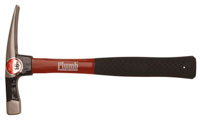 Brick Hammer
Brick Hammer Bushing Hammer
Bushing Hammer Cross Peen Hammer
Cross Peen Hammer
 Chasing Hammer
Chasing Hammer Drywall Hammer
Drywall Hammer Electrician’s Hammer
Electrician’s Hammer
 Hatchet Hammer
Hatchet Hammer Joiner’s Mallet
Joiner’s Mallet Lineman’s Hammer
Lineman’s Hammer Mechanic’s Hammer
Mechanic’s Hammer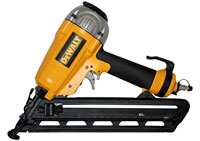 Nail Gun
Nail Gun Piton Hammer
Piton Hammer Planishing Hammer
Planishing Hammer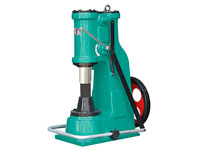 Power hammer
Power hammer Rip Hammer
Rip Hammer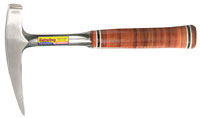 Rock Hammer
Rock Hammer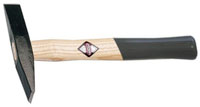 Scaling Hammer
Scaling Hammer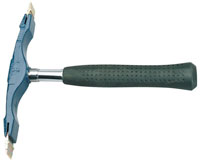 Scutch Hammer
Scutch Hammer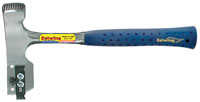 Shingle Hammer
Shingle Hammer Soft-Faced hammer
Soft-Faced hammer Spike Maul Hammer
Spike Maul Hammer Stone Sledge Hammer
Stone Sledge Hammer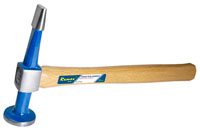 Straight Peen Hammer
Straight Peen Hammer Tinner’s Hammer
Tinner’s Hammer Toolmaker’s Hammer
Toolmaker’s Hammer Trim Hammer
Trim Hammer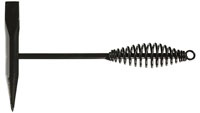 Welding Hammer
Welding Hammer
